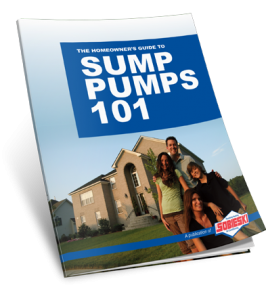How to Select the Right Sump Pump for Your Basement
A sump pump is the most effective method of removing excess water from your home, particularly in basements and crawl spaces. Whether you are worried about flooding due to heavy rainfall or you live in an area with a high water table, a sump pump will automatically remove the water accumulation and send it to a nearby drain.
You’ll need to contact an experienced sump pump installer who can help you select the right type of pump and the correct size for your home, and then install it so it hooks up to the appropriate power supply and effectively drains the water into a well or the plumbing system.
What Does a Sump Pump Do?
Placed in a basement, a sump pump does the job of extricating excess water from flooding and removing it to either a storm drain or a dry well. If you experience regular basement flooding or dampness because your home’s foundation lies below the water table, then a sump pump is an essential piece of equipment.
Installing a sump pump or back up sump pump will:
- Prevent basement flooding
- Protect your home from mildew and mold
- Protect your belongings
- Give you the peace of mind during periods of heavy rain
- Operate by battery in case of a power outage
Reasons to install or replace a sump pump:
- Outdated, pedestal-style sump pump
- Turns on and off frequently
- Runs for long periods of time
- Doesn’t turn on when needed
- Makes rattling or grinding noises
- Doesn’t have a battery backup system
Choosing the Right Sump Pump
PUMP DESIGN
You have the choice between a submersible and a pedestal sump pump.
Pedestal sump pumps sit above the water level on a pedestal. They are cheaper to buy and maintain, but are noisier, take up more space, and have less power than submersible ones.
Submersible sump pumps get submerged in the water of the sump. While they are more expensive, they have stronger motors for bigger floods and are much less conspicuous.
HORSEPOWER
How much power you need depends on the severity of your basement flooding. If you are only dealing with a small amount of water, 1/4 HP will probably be enough. Although most pumps are 1/3 HP, you may need a pump with 1/2 HP or higher for major flooding and wetness issues.
HEAD PRESSURE
Head pressure refers to how high your sump pump can pump the water up to ground level. In order to know the correct head pressure for your sump pump, you will need to know how high your basement is. Most pumps have the power to lift water at least 10 feet, but you will want to double-check this with your professional plumber.
MANUAL VS. AUTOMATIC
Most sump pumps are automatic, meaning that a float valve will switch on the pump when a certain level of water is detected, but if you’d like to save some money, you may want to consider a manual sump pump. This will require someone to be home to activate the pump in the case of a flooding scenario. It’s worth the convenience and peace of mind to get an automatic sump pump so you don’t have to worry about being there to operate it.
POWER CORD
It’s essential that you have a GFCI-protected outlet near your sump pump so you don’t have to use an extension cord. Choose a sump pump with a cord that is long enough to reach a GFCI outlet.
VOLTAGE
For most, a typical 110-volt circuit will be enough, but if you are using a sump pump for commercial purposes, you may need a dedicated circuit with a higher voltage. Consult an electrician to make sure your sump pump is properly hooked up to your electrical system.
BACKUP OR ALARM SYSTEM
It’s important to have either an alarm system or an emergency battery backup in the case of a power outage. If your power gets knocked out during a storm, your sump pump will be inoperable unless you have a battery backup, which we highly recommend.
Professional Sump Pump Installation
The pump that will work best for you depends on how much flooding you regularly need to deal with. The plumbing experts at Sobieski Services can help you choose the pump type. Installing a sump pump requires more work than simply turning it on. You’ll need professional installers to attach the sump pump to an external reservoir of some kind, and the installers will create a sump that will sufficient enough water down into it.
Sump pumps don’t have to be mystifying objects hiding in your basement. Learn everything you need to know about sump pumps by downloading our free guide to sump pumps. For professional sump pump consultation and installation, contact Sobieski today!








